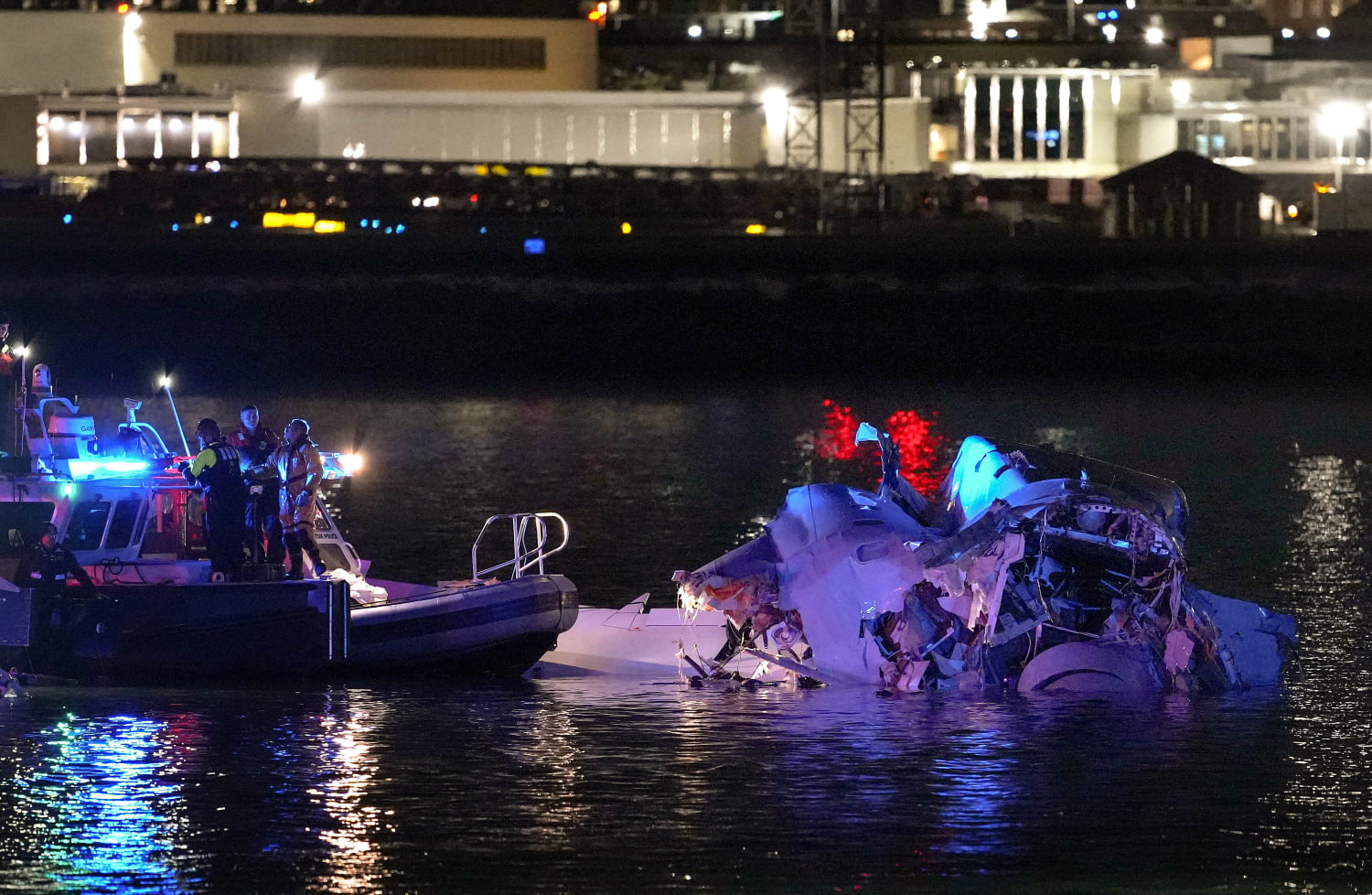American Airlines jet, Army helicopter collide, crash into Washington’s Potomac River
American Eagle Flight 5342, which was inbound from Wichita, Kansas, was carrying 60 passengers and four crew members, American Airlines said. The Black Hawk helicopter had three people aboard, Washington Mayor Muriel Bowser said.
“Certainly I speak for the people of Washington, 700,000 of us, who are extremely sorry for the families who are experiencing loss tonight,” Bowser said at a news conference early Thursday.
The aircraft collided midair near Reagan Washington National Airport and plunged into the Potomac River, where dark, icy conditions were posing a challenge to search-and-rescue efforts.
American Airlines confirmed that 64 people were aboard the jet: 60 passengers and four crew members. Three soldiers were aboard the helicopter, which was on a training flight, a U.S. official said.
The midair collision occurred as the passenger jet en route from Wichita, Kansas was on approach to land at Reagan. Radio communications between the air traffic control tower and the Black Hawk show that the helicopter crew were aware that the plane was nearby vicinity.
The Pentagon said it was launching an immediate investigation into the incident, which President Donald Trump appeared to blame on the helicopter crew and air traffic controllers in a post on Truth Social.
“The helicopter was going straight at the airplane for an extended period of time. It is a CLEAR NIGHT, the lights on the plane were blazing, why didn’t the helicopter go up or down, or turn,” Trump wrote.
“Why didn’t the control tower tell the helicopter what to do instead of asking if they saw the plane. This is a bad situation that looks like it should have been prevented. NOT GOOD!!!”
Air traffic control recordings appear to capture the final attempted communications with the helicopter, callsign PAT25, before it collides with the plane, described as CRJ.
“PAT25, do you have a CRJ in sight? PAT25, pass behind the CRJ,” an air traffic controller says at 8:47 p.m. (0147 GMT), according to a recording on liveatc.net.
Seconds later, another aircraft calls in to air traffic control, saying, “Tower, did you see that?” – apparently referring to the crash. An air traffic controller then redirects planes heading to runway 33 to go around.


